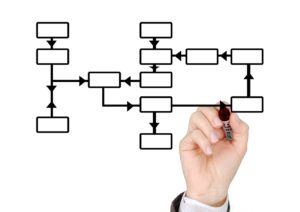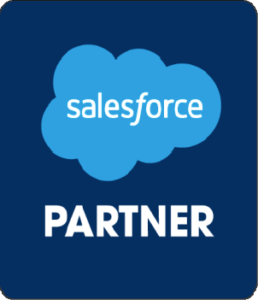Introduction
It’s hard to imagine getting some things done without the use of the biggest tool available to do it. If you have a question, Google it. Need to watch a tutorial video, YouTube has it. Have a cut, put a Band-Aid on. What do all these brands and products have in common? Genericization, which means they have become generic and popular, they replace the original name for the product. Salesforce is quickly moving in this direction in the CRM space.
With Salesforce becoming synonymous with CRM and it quickly growing into one of the largest tech companies, it’s crucial to learn how to utilize it best right now. A big part of this utilization is making sure your sales team is getting the most out of it that they can. So, here’s some Salesforce best practices for sales reps.
Salesforce Best Practices
To begin, we should talk about general Salesforce best practices:
What is the Best Use of Salesforce?
Salesforce is best used as a CRM tool. Some may want Salesforce to be an all-encompassing tool, but we’ll talk more about what to pair with it later. CRM, or customer relationship management is technology that helps bridge the gap between your company and your customers. For example, as a seller, Salesforce can hold lots of information about your current customers as well as supply information about potential leads as well. This is just one part of Salesforce as well. Salesforce should be used to store data, connect sales and marketing, help you focus your efforts, provide reports, keep track of the sales pipeline and share information with colleagues.
Salesforce Best Practices for Sales
Taking marketing out of the equation, Salesforce is a great tool for a company’s sales efforts. Salesforce has many useful ways to help. But you must remember to follow some best practices. These include ensuring your data is accurate and high quality, making sure your Salesforce is organized and streamlined, having a Salesforce administrator or expert on your team and making sure data security is top of mind and great starting points.
Check out Salesforce’s 12 Habits of Successful Seller’s here!
Salesforce Best Practices for Sales Reps
As previously mentioned, Salesforce plays a key role in a seller’s job. Both in their day-to-day and long-term efforts, Salesforce is there every step of the way. In a seller’s day-to-day efforts, Salesforce is great for organization. It’s important for sellers to make sure customer information is accurate and up to date in Salesforce.
A big part of selling is connecting with your prospect. By making sure data is accurate in Salesforce, you can ensure you’re up to date on the prospect's latest information. This helps with a seller’s necessary soft skills by making them more confident in making a genuine connection and helping a prospect solve their wants and needs.

How to Use Salesforce Effectively
Having Salesforce and using it effectively are two very different things. It’s not enough to just have Salesforce. Many companies fall into this trap. It’s a big shiny new toy for you but can quickly become overwhelming if not used properly. Using Salesforce means implementing all of the best practices from above. More specifically, it means constantly evaluating these best practices and making sure your team is constantly learning how to use the tool better.
Formulating a Salesforce Sales Strategy
In order to make sure you have the best sales strategy in place when using Salesforce, here’s a few things to keep in mind:
Base Your Strategy on What’s Working
A big factor in continued success using Salesforce to help with selling is being open to adapting your strategy. No one is going to get it figured out perfectly the first time around. So, it’s important to stay open minded and use Salesforce to your advantage. Track what’s working and implement these best practices across the whole team. Being open to switching things up and basing your strategy on what’s working can be the difference in falling behind and seeing great success.
Salesforce Strategy to Increase Sales
There’s lots of ways you can implement a Salesforce strategy to increase sales. Salesforce has a great article about this, but here’s the highlights. To help increase sales your team must make sure it’s tracking metrics related to your business’ productivity and success, base your strategy on what’s working, balancing relationship and productivity, focus on process maturity and have low turnover.
Creating a Salesforce Sales Process
Now that you know how important it is to have a strategy to go with your Salesforce and some key things to keep in mind, let’s look at how to create a sales process in Salesforce to go along with this strategy:
Salesforce Sales Process Stages
Salesforce highlights 7 main sales stages in this blog. In short, here they are. From beginning to end, you must:
- Find a prospect
- Qualify the lead
- Set demos or meetings
- Send a proposal
- Negotiate a deal
- Win the opportunity
- Follow post-purchase procedures.
Each of these stages are crucial in the sales process and Salesforce can help with all. From finding a prospect to helping with post-purchase actions, Salesforce, when used properly, can help every step of the way.

How to Create a Sales Process in Salesforce
To create this process and carry out the steps in Salesforce, we recommend using a sales engagement platform. These are tools that help highlight these stages and help sellers complete them with ease. If your team uses Salesforce, we recommend using Salesvue, as it is the only sales engagement platform that looks and feels like Salesforce. Salesvue can be used to reach prospects, organize data, set meetings, follow through even during the post-purchase process and so much more. This Salesforce-native solution provides sellers the automation and efficiency needed to get the best use out of Salesforce.

Summary
Salesforce is becoming more and more involved in every seller’s life, if it doesn’t already run their day. So, embrace this and start using it to win you more deals. Implement Salesforce best practices for your sales reps and you’ll start to see the great results. Find out what’s working, create a great process and give your reps the tools they need to complete it.
Category
Tags
Subscribe to Funnel Vision
Get the latest and greatest right in your inbox






